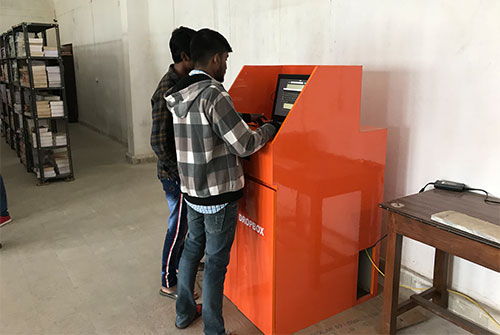- Easily manages the complete library functions.
- Provision of checking the availability of books online.
- Generate a customized report of library items.
- It removes the manual work, as it is computer-based software.
- It is a user-friendly system.
- The system automatically shows late fee fine by calculating from the due date.
- It is a flexible system.
- Students can view the library items online
Read More:
Working of an Integrated library system
An advance library management system has fully replaced traditional libraries, which seems to be boring and took a lot of time to search for a book. In today’s time, it is important to switch to advance technology due to the shortage of time and patience in students.Now, let's learn how an Integrated library system works in a library. An integrated library system works on various modules like acquisition, cataloging, circulation, serials, etc.
- Acquisition– This module is used for ordering or purchasing the material of the library whether it is a book, journal, CD/DVDs or any other item required in the library. It supports budget and expenditure monitoring also. It includes vendor files, vendor codes, records of firm orders, standing orders, etc.
- Cataloging – This module is used for generating and managing MARC records like the list of subjects, author name, description, etc. and it allows the user to search online the items available in the library.
- Circulation –This module helps in keeping records of all the books in the library and how they are circulated or issued to the students. It keeps a record of all the functions related to management, display, fine collection, trap reserved items, notify over-borrowing, prepare overdue and recall notices, etc. in the library.
- Serials –This module is used for purchasing and checking issues. This system maintains a record of the budget sanctioned for serials under different categories.
- Ordering
- Binding
- Claiming issues
- Fund accounting
- Inquiries
- OPAC (Online Public Access Catalogue) –This module provides access, for searching the collection by the public. The basic functions of OPAC are; to search using different indexes, look for the patrons, modify the bibliographic record, to include pictures.
- Authority Control – This the special module used with the catalog module. It is used for creating, storing and managing authorized headings like author name, subject headings, etc.
Conclusion
To conclude, the library automation software works smoothly with these modules. The above modules play an important role in the library management system, they not only enhance the functioning but also helps in keeping the day to day record of every item.Library automation has changed the whole structure of the library, it allows the user to search online anywhere and anytime.

